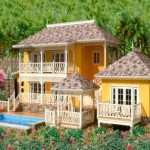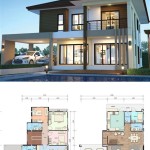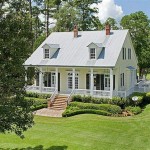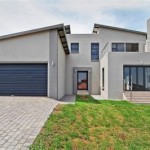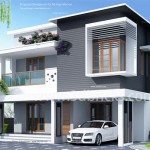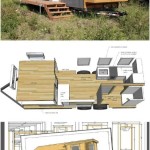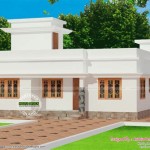Watercolor FL House Plans: A Design Exploration of Coastal Living
Watercolor, Florida, a planned community nestled along the Gulf Coast, stands as an exemplar of New Urbanism, characterized by walkable streets, mixed-use development, and a strong sense of community. Consequently, house plans designed for Watercolor must adhere to specific architectural guidelines that emphasize harmony with the natural environment, while simultaneously reflecting the distinct aesthetic of the region. This article explores the key elements of Watercolor FL house plans, focusing on the architectural styles, materials, and design considerations that contribute to their overall appeal and functionality.
The architectural landscape of Watercolor is primarily defined by a blend of Coastal, Craftsman, and Traditional styles, each adapted to suit the unique coastal environment. These styles often incorporate elements such as deep porches, ample windows, and light-colored exteriors, all designed to maximize natural light and ventilation. The overarching goal is to create homes that are both aesthetically pleasing and functionally suited to the demands of coastal living, considering factors like hurricane resistance and sun exposure.
Key Architectural Styles in Watercolor House Plans
The architectural diversity within Watercolor is carefully managed through design codes to maintain a cohesive visual identity. While variations exist, certain styles frequently recur. Understanding these styles is crucial for anyone considering building or renovating in this area.
Coastal Style: The Coastal style, as the name suggests, draws inspiration from the surrounding Gulf Coast environment. These homes often feature light and airy interiors, large windows offering expansive views, and durable materials designed to withstand the elements. The exterior typically showcases light-colored siding, often painted white or in pastel shades, complemented by natural wood accents. Rooflines tend to be simple and understated, with a focus on functional design rather than elaborate ornamentation. Deep porches are a defining characteristic, providing ample outdoor living space and shading the interior from the intense sun. Inside, open floor plans are common, facilitating airflow and creating a relaxed, informal atmosphere. Coastal style homes often incorporate nautical design elements, such as rope details, shiplap walls, and marine-themed accessories.
Craftsman Style: The Craftsman style emphasizes handcrafted details, natural materials, and a connection to the surrounding landscape. These homes typically feature gabled roofs with wide eaves, exposed rafters, and substantial front porches supported by tapered columns. The exterior often incorporates a combination of materials, such as wood siding, stone accents, and brick detailing. Interior spaces are characterized by natural wood finishes, built-in cabinetry, and handcrafted details. Fireplaces are frequently a focal point, often surrounded by custom-built mantels and tilework. The Craftsman style prioritizes quality craftsmanship and attention to detail, creating homes that are both beautiful and functional. In Watercolor, the Craftsman style is often adapted to incorporate coastal elements, such as lighter colors and durable materials.
Traditional Style: The Traditional style encompasses a range of architectural influences, from Colonial to Federal, adapted to suit the coastal environment. These homes typically feature symmetrical facades, formal entryways, and well-defined spaces. The exterior often showcases brick or clapboard siding, with classic architectural details such as columns, cornices, and pediments. Interior spaces are characterized by formal living and dining rooms, as well as comfortable family areas. Traditional style homes in Watercolor often incorporate elements of Southern architecture, such as wide porches, shuttered windows, and lush landscaping. While maintaining a sense of formality and tradition, these homes also embrace the casual lifestyle of the Gulf Coast, often incorporating outdoor kitchens and living spaces.
Material Selection and Durability
Selecting the right materials is paramount when designing a house in a coastal environment like Watercolor. The proximity to the Gulf Coast exposes homes to harsh weather conditions, including intense sunlight, high humidity, salt air, and the potential for hurricanes. Therefore, materials must be durable, weather-resistant, and capable of withstanding these environmental stresses. Furthermore, materials should align with the aesthetic guidelines of the community, contributing to the overall visual harmony of the neighborhood.
Exterior Materials: Common exterior materials include fiber cement siding, known for its durability and resistance to rot, insects, and fire; stucco, a traditional material that provides excellent insulation and weather protection; and natural wood siding, typically cedar or cypress, which is naturally resistant to decay and insect damage. Metal roofing is another popular option, offering exceptional durability and longevity, as well as resistance to high winds. Windows and doors should be impact-resistant and energy-efficient, helping to reduce energy costs and protect the home from storm damage. Consider using low-E glass to minimize heat gain and reduce glare. Exterior hardware and fixtures should be made of corrosion-resistant materials, such as stainless steel or marine-grade aluminum, to withstand the corrosive effects of salt air.
Interior Materials: Interior materials should also be chosen with durability and maintenance in mind. Hardwood flooring, tile, and stone are all excellent choices for high-traffic areas, as they are easy to clean and resistant to wear and tear. For cabinetry, solid wood or plywood construction is preferred over particleboard, as it is more durable and resistant to moisture damage. Countertops should be made of durable materials such as granite, quartz, or solid surface, which are resistant to scratches, stains, and heat. Interior paint should be mildew-resistant to prevent mold growth in humid conditions. Consider using light-colored paints to reflect sunlight and keep the interior cool. Upholstery fabrics should be stain-resistant and easy to clean, as well as resistant to fading from sun exposure.
Sustainable Materials: Incorporating sustainable materials into the design is increasingly important. Recycled materials, such as reclaimed wood and recycled glass, can add character and reduce environmental impact. Energy-efficient appliances and fixtures can help to reduce energy consumption and lower utility bills. Water-conserving fixtures, such as low-flow toilets and showerheads, can help to conserve water resources. Consider using sustainable landscaping practices, such as xeriscaping, to reduce water usage and maintenance requirements.
Design Considerations for Coastal Living
Beyond aesthetics and materials, several design considerations are crucial for creating a functional and comfortable home in Watercolor. These considerations address the specific challenges and opportunities presented by the coastal environment, ensuring that the home is both enjoyable to live in and resilient to the elements.
Natural Light and Ventilation: Maximizing natural light and ventilation is essential for creating a comfortable and energy-efficient home. Large windows and doors should be strategically placed to capture natural light and provide cross-ventilation. Operable windows allow for natural airflow, reducing the need for air conditioning. Skylights can bring natural light into interior spaces, such as hallways and bathrooms. Overhangs and awnings can provide shade, reducing heat gain and glare. Consider using light-colored interior finishes to reflect sunlight and brighten the space. Orient the home to take advantage of prevailing breezes, promoting natural ventilation and reducing the need for mechanical cooling.
Outdoor Living Spaces: Outdoor living spaces are an integral part of the Watercolor lifestyle. Deep porches, patios, and decks provide ample space for relaxing, entertaining, and enjoying the coastal scenery. Outdoor kitchens and dining areas extend the living space outdoors, creating a seamless transition between indoors and out. Consider incorporating outdoor fireplaces or fire pits for cooler evenings. Landscaping should be designed to provide shade, privacy, and visual appeal. Native plants are well-suited to the coastal environment and require less maintenance and watering than exotic species. Outdoor lighting can enhance the ambiance and extend the usability of outdoor spaces.
Hurricane Resistance: Hurricane resistance is a critical consideration for any home in a coastal area. Building codes require specific measures to protect homes from high winds and storm surge. These measures include reinforced foundations, impact-resistant windows and doors, and secure roof attachments. Elevating the home above the base flood elevation can reduce the risk of flood damage. Consider using storm shutters or hurricane screens to protect windows and doors during severe weather. Landscaping should be designed to withstand high winds and minimize debris. Develop a hurricane preparedness plan and ensure that all family members are familiar with it.
Privacy and Views: Balancing privacy and views is an important design consideration. Strategically placed windows and landscaping can provide privacy from neighboring homes while still allowing for expansive views of the surrounding landscape. Fences, walls, and hedges can create privacy in outdoor living spaces. Consider the orientation of the home to maximize views and minimize exposure to noise and traffic. Use window treatments, such as blinds, shades, or curtains, to control light and privacy. Design the home to take advantage of natural features, such as trees and topography, to enhance privacy and create a sense of seclusion.
Watercolor FL house plans represent a careful balance between architectural aesthetics, material durability, and functional design. By adhering to the community's design guidelines and incorporating the principles of coastal living, homeowners can create homes that are both beautiful and resilient. The key is to understand the specific requirements of the region and to work with experienced architects and builders who are familiar with the unique challenges and opportunities of building in a coastal environment.

Dream Beach House Floor Plan From Watercolor Florida

Dream Beach House Floor Plan From Watercolor Florida

Gorgeous Beach House In Watercolor Boasts Captivating Details

Watercolor Homes For Florida Near 30 A Beaches Beach House Exterior Tour Interior

Floor Plans Genesis Studios

Jones Clayton Construction Four Seasons Private Residences Genesis Studios

The Blue Bird 2244sqft Cottage House Plans Exterior Coastal Homes

Delightful Lakefront Cottage With Inviting Interiors In Watercolor

Santa Rosa Sound Coastal House Plans From Home

Florida Architects Watersound Watercolor Rosemary Beach Small Houses House Plans Cottage


